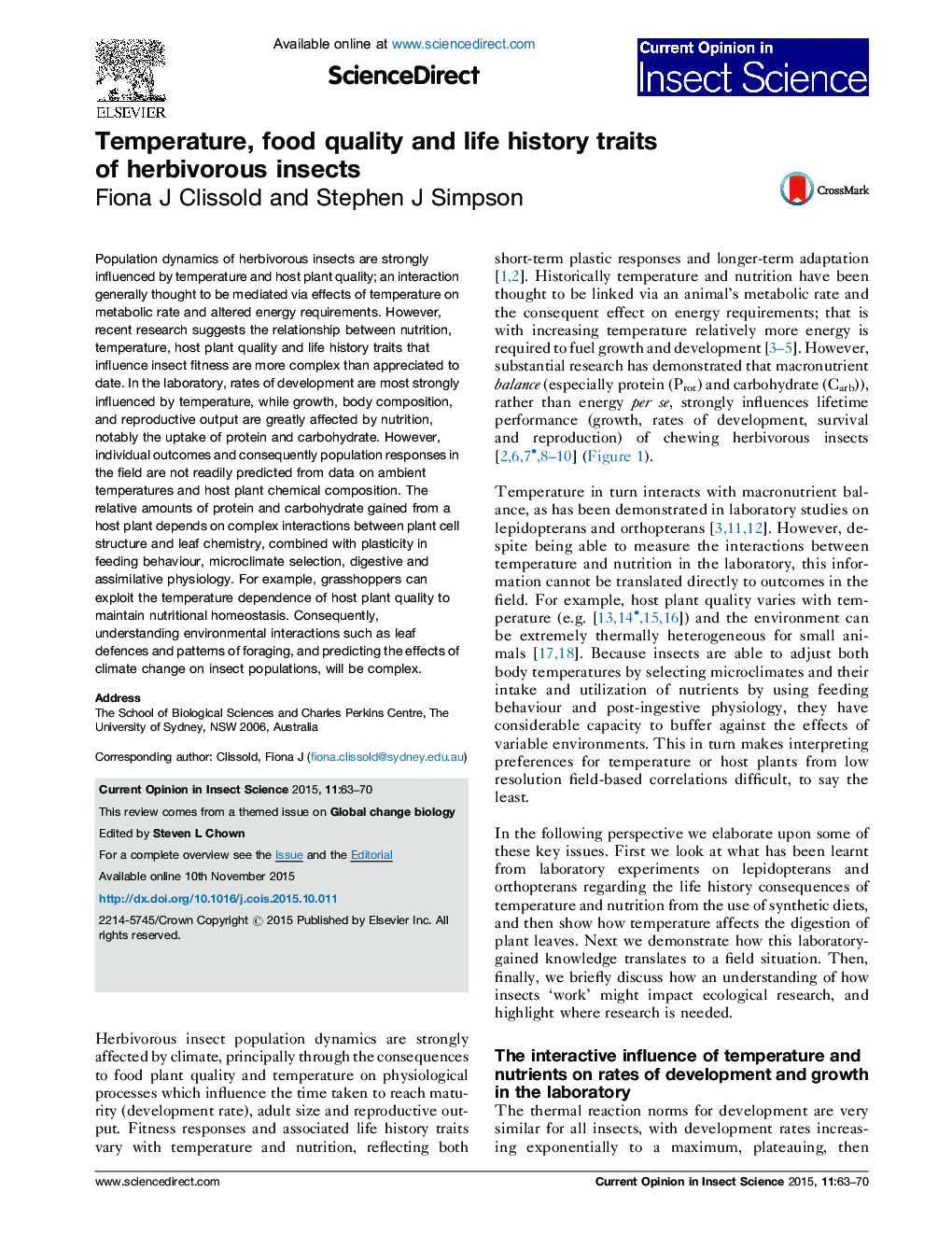| Article ID | Journal | Published Year | Pages | File Type |
|---|---|---|---|---|
| 4508157 | Current Opinion in Insect Science | 2015 | 8 Pages |
•Temperature and nutrition interact to affect key life history traits: size at maturity, development rate, reproduction and survival.•Rates of development vary considerably across thermal gradients, with size at maturity and reproductive output modified by nutritional gain.•The actual and relative rate of gain of nutrients by herbivorous insects is both temperature and plant species dependent.•Herbivores use behaviour to exploit this temperature–host plant specific nutrient gain.•The integrated effects of temperature and nutrition on insect herbivore fitness, host plant choice and foraging will be highly complex.
Population dynamics of herbivorous insects are strongly influenced by temperature and host plant quality; an interaction generally thought to be mediated via effects of temperature on metabolic rate and altered energy requirements. However, recent research suggests the relationship between nutrition, temperature, host plant quality and life history traits that influence insect fitness are more complex than appreciated to date. In the laboratory, rates of development are most strongly influenced by temperature, while growth, body composition, and reproductive output are greatly affected by nutrition, notably the uptake of protein and carbohydrate. However, individual outcomes and consequently population responses in the field are not readily predicted from data on ambient temperatures and host plant chemical composition. The relative amounts of protein and carbohydrate gained from a host plant depends on complex interactions between plant cell structure and leaf chemistry, combined with plasticity in feeding behaviour, microclimate selection, digestive and assimilative physiology. For example, grasshoppers can exploit the temperature dependence of host plant quality to maintain nutritional homeostasis. Consequently, understanding environmental interactions such as leaf defences and patterns of foraging, and predicting the effects of climate change on insect populations, will be complex.
